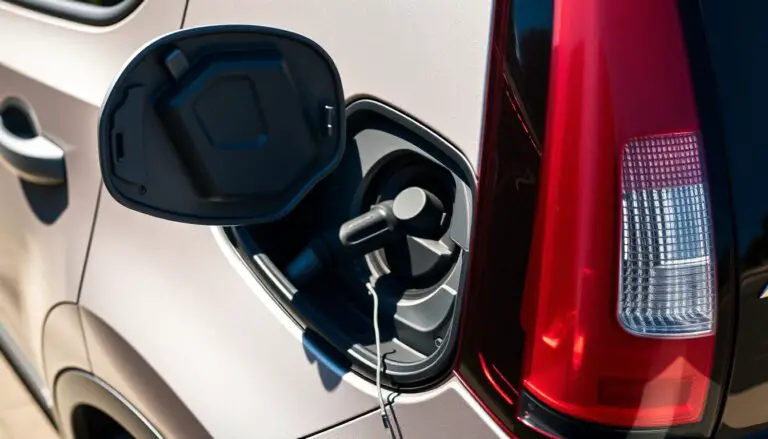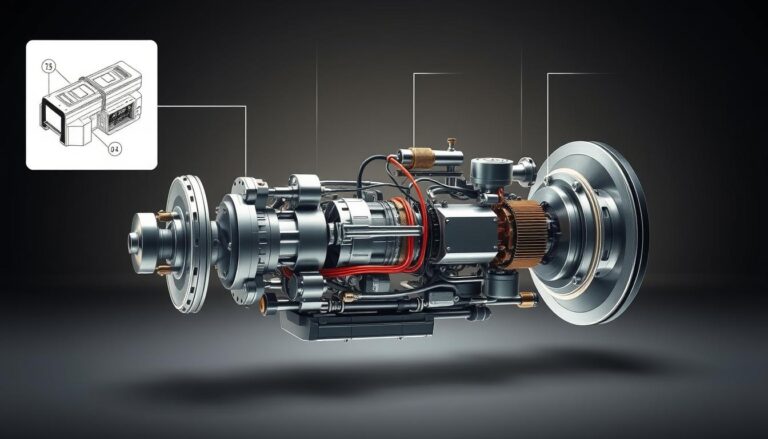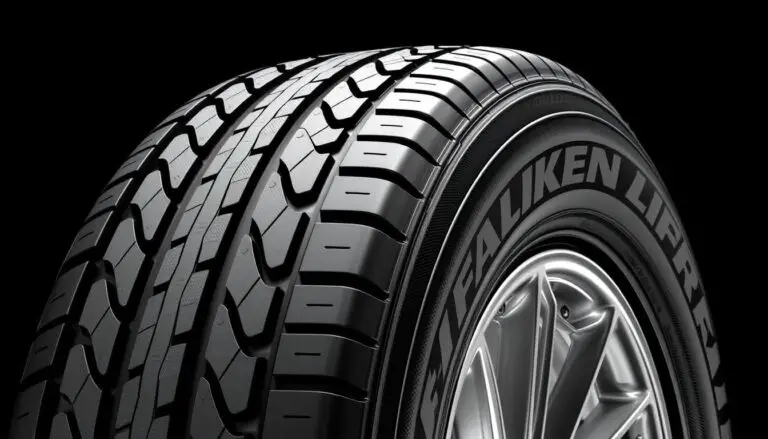Maintaining rubber seals and gaskets is paramount for the optimal functioning of a vehicle. These components, over time, can deteriorate, manifesting as brittleness and cracks, which inevitably lead to leaks and a decline in efficiency. The restoration of these components is imperative for the longevity of your vehicle.
The restoration of rubber seals entails a process of softening them to their pristine state, thus enhancing their sealing efficacy. This guide will elucidate the necessary steps for effective automotive gasket maintenance, facilitating the revival of your vehicle’s rubber seals.
Key Takeaways
- Understanding the importance of rubber seal maintenance
- Steps to restore rubber seals effectively
- Benefits of regular automotive gasket maintenance
- Techniques for softening rubber seals
- Tips for ensuring optimal vehicle performance
Understanding Automotive Rubber Seals and Gaskets
Rubber seals and gaskets are indispensable in the automotive realm, guaranteeing the functionality of myriad systems. They act as barriers against leaks, dampen noise, and uphold the structural integrity of vehicular systems.
Common Types of Automotive Rubber Seals
Within the automotive domain, rubber seals are categorized based on their application, each tailored for distinct functionalities. Door seals, trunk seals, and those for the engine compartment are among the most prevalent. These are crafted from materials such as EPDM (Ethylene Propylene Diene Monomer) and neoprene, selected for their exceptional durability and environmental resilience.

The Critical Role of Gaskets in Vehicle Performance
Gaskets are pivotal in sustaining vehicular performance and efficiency. They serve as the linchpin, sealing critical engine and transmission components, thus averting leaks and ensuring peak operational efficiency. The integrity of a gasket system is paramount for the vehicle’s longevity and dependability.
Signs of Deteriorated Rubber Seals
When rubber seals deteriorate, they can precipitate a cascade of problems, including leaks, noise, and a decline in vehicle performance. Indicators of such deterioration include the presence of cracks, a loss of flexibility, and discoloration. Vigilant inspection is imperative for early detection, facilitating timely intervention or replacement.
| Type of Seal | Common Issues | Restoration Method |
|---|---|---|
| Door Seals | Cracks, Loss of Flexibility | Rubber Conditioner |
| Engine Compartment Seals | Brittleness, Discoloration | Softening Treatments |
| Trunk Seals | Leaks, Noise | Seal Restoration Products |
Why Rubber Seals Harden and Deteriorate
The phenomenon of rubber seals hardening necessitates a comprehensive understanding of gasket revitalization. The degradation of rubber seals is a complex issue, influenced by environmental conditions, chemical exposure, and the inherent aging process of the material.
Environmental Factors Affecting Rubber Longevity
Environmental factors significantly contribute to the degradation of rubber seals. Extreme temperatures, UV radiation, and moisture can cause rubber to lose its elasticity, becoming brittle. For example, prolonged exposure to direct sunlight can accelerate degradation due to UV radiation.

Chemical Exposure and Its Effects
Chemical exposure is a critical factor impacting rubber seal longevity. Exposure to various automotive fluids, such as oil, brake fluid, or coolant, can induce chemical changes in rubber, leading to swelling, hardening, or cracking. The severity of the damage varies based on the chemical type and duration of exposure.
| Chemical | Effect on Rubber Seals |
|---|---|
| Oil | Swelling and softening |
| Brake Fluid | Hardening and cracking |
| Coolant | Deterioration and leakage |
Age-Related Degradation Process
The natural aging process of rubber seals also contributes to their deterioration. Over time, rubber undergoes material property changes, leading to a loss of flexibility and an increase in brittleness. This process is inevitable but can be mitigated through proper maintenance and protection.
By comprehending these factors, vehicle owners can proactively extend the life of their rubber seals, ensuring optimal vehicle performance.
How to Soften Rubber Seals: Revitalizing Automotive Gaskets for Peak Performance
The rejuvenation of automotive gaskets necessitates a comprehension of the effective softening of rubber seals. These seals, subjected to environmental and chemical stressors, can deteriorate, compromising performance and potentially leading to leaks. The restoration of these seals is pivotal in enhancing the overall efficiency and longevity of your vehicle.
Tools and Materials Needed for Seal Restoration
To initiate the restoration process, a compilation of essential tools and materials is imperative. A cleaning solution is required to eradicate dirt and grime, accompanied by a rubber conditioner or restorer. Applicator tools, such as brushes or cloths, are also necessary. For further elucidation on gasket quality, refer to this resource.
- Cleaning solution
- Rubber conditioner or restorer
- Applicator brushes or cloths
- Gloves for protection
Commercial Rubber Conditioners and Restorers
Commercially available products are formulated to rejuvenate rubber seals, restoring their flexibility and sealing efficacy. It is crucial to select products designed for automotive use and adhere to the manufacturer’s guidelines.
“Using the right rubber conditioner can make a significant difference in the longevity and performance of your vehicle’s gaskets.”
DIY Solutions for Softening Hardened Seals
For those inclined towards a hands-on approach, several DIY solutions can be efficacious. These include glycerin or silicone-based treatments, as well as certain household oil alternatives.
Glycerin and Silicone-Based Treatments
Glycerin and silicone-based products are renowned for their moisturizing and protective properties on rubber. Their application can significantly enhance the flexibility of hardened seals.
Household Oil Alternatives
Certain household oils can serve as alternatives for conditioning rubber seals. It is,etheless, imperative to conduct a preliminary test on a small area to ascertain their compatibility with the rubber.
| Product Type | Benefits | Precautions |
|---|---|---|
| Glycerin | Moisturizes rubber | Can attract dirt |
| Silicone-Based | Protects against drying | May not be suitable for all rubber types |
| Household Oils | Easily available | Can damage certain rubber compounds |
Step-by-Step Application Process
Once the restoration product is selected, adhere to the following steps:
- Clean the seal thoroughly.
- Apply the conditioner or restorer.
- Allow it to dry or absorb as per the product’s instructions.
- Inspect and repeat if necessary.
Safety Precautions When Working with Rubber Treatments
When utilizing chemical treatments, prioritizing safety is paramount. Wear protective gloves, ensure adequate ventilation, and follow the product’s safety guidelines to avert potential harm.
By adhering to these guidelines and utilizing the appropriate products, you can effectively soften and restore your vehicle’s rubber seals, ensuring optimal performance and longevity.
Testing and Maintaining Restored Seals
The longevity of restored rubber seals necessitates consistent testing and maintenance. Post-gasket revitalization, verifying their efficacy and establishing a maintenance regimen are paramount to extend their service life.
How to Test Seal Effectiveness After Treatment
To assess the efficacy of restored seals, visually inspect for leakage or wear signs. A pressure test with a soapy solution can reveal weak points. Ensure the area is well-ventilated and follow safety guidelines during these evaluations.
| Test Method | Description | Expected Outcome |
|---|---|---|
| Visual Inspection | Examine the seal for signs of wear or leakage. | No visible signs of leakage or deterioration. |
| Pressure Test | Apply a soapy solution to the seal and check for bubbles. | No bubbles indicating air leakage. |
Regular Cleaning and Conditioning Schedule
Consistent cleaning and conditioning are crucial for seal maintenance. Utilize a mild detergent and water for cleaning, and apply rubber conditioner every few months to maintain suppleness. Regular maintenance can significantly extend the life of your vehicle’s gaskets.
Protecting Seals from Environmental Damage
Environmental factors such as UV exposure, extreme temperatures, and chemical spills can compromise restored seals. Employ protective coatings or covers to shield them from these elements. Park your vehicle in a shaded area when feasible.
When to Replace Instead of Restore
Not all damaged seals can be effectively restored. If a seal is severely deteriorated, cracked, or has been damaged beyond a certain point, replacement may be more economical. Carefully evaluate the condition of your seals to determine the most appropriate action.
Adhering to these guidelines ensures your restored rubber seals function optimally, preserving your vehicle’s performance and longevity.
Conclusion
The imperative of rubber seal restoration for sustaining vehicular performance cannot be overstated. Grasping the etiology of deterioration and employing efficacious rubber conditioners are pivotal in revitalizing automotive gaskets.
Efficient rubber seal restoration necessitates the selection of appropriate tools and materials, coupled with the application of commercial or DIY solutions. A meticulous step-by-step application process is indispensable. Regular testing and maintenance are equally crucial to guarantee the enduring efficacy of restored seals.
Adopting a consistent cleaning and conditioning regimen is paramount in safeguarding seals against environmental degradation and prolonging their lifespan. The discernment between when to replace versus restore seals is equally critical for achieving optimal vehicular performance.
Employing the correct methodologies and materials enables the successful softening and maintenance of your vehicle’s rubber seals. This ensures a more refined and efficient driving experience.
FAQ
What are the signs that my vehicle’s rubber seals need to be softened or restored?
Indications that your vehicle’s rubber seals necessitate restoration encompass visible fissures, hardening, or brittleness, alongside leaks or diminished performance in systems sealed by these gaskets, such as doors, windows, or engine compartments.
Can I use household products to soften my vehicle’s rubber seals?
Utilizing household products, such as glycerin or silicone-based treatments, can soften rubber seals. It is imperative, though, to verify the product’s compatibility with the rubber composition of your vehicle’s seals to avert potential damage.
How often should I condition my vehicle’s rubber seals after restoration?
The conditioning frequency hinges on environmental conditions and the rubber type. Generally, conditioning every 6 to 12 months is advisable, though this interval may fluctuate based on sunlight exposure, temperature extremes, and other environmental factors.
Are commercial rubber conditioners more effective than DIY solutions?
Commercial rubber conditioners, tailored for automotive rubber, exhibit high efficacy. Yet, certain DIY solutions, when applied correctly, can also yield satisfactory results. The decision between commercial and DIY solutions hinges on the specific requirements of your vehicle’s seals and personal inclination.
How can I protect my vehicle’s rubber seals from environmental damage?
To safeguard rubber seals from environmental degradation, regular cleaning, conditioning, and avoidance of extreme temperatures, direct sunlight, and chemicals are crucial. Employing shaded parking or utilizing a sunshade can mitigate UV-induced damage.
When should I replace my vehicle’s rubber seals instead of restoring them?
Replacement is advisable when seals are severely deteriorated, cracked beyond repair, or when restoration fails to restore their functionality. Also, if seals are aged or have been compromised by chemicals, replacement might be the more economical and dependable option.
Can softening rubber seals improve my vehicle’s overall performance?
Yes, softening rubber seals can enhance your vehicle’s performance by ensuring a tighter seal, reducing leaks, and maintaining the integrity of various systems such as the engine, doors, and windows. This can lead to better fuel efficiency, diminished noise, and an overall superior vehicle condition.


